Francis Ryan Smith WWI Ace Pilot: Remembrance Day 2023
By Anzac Square Memorial Galleries | 19 September 2023
Armistice Day 1918 plays a pivotal role in the remarkable story of WWI flying ace, Queensland's Francis Ryan Smith. His short and distinguished service as an infantryman was only matched by his service as a pilot.
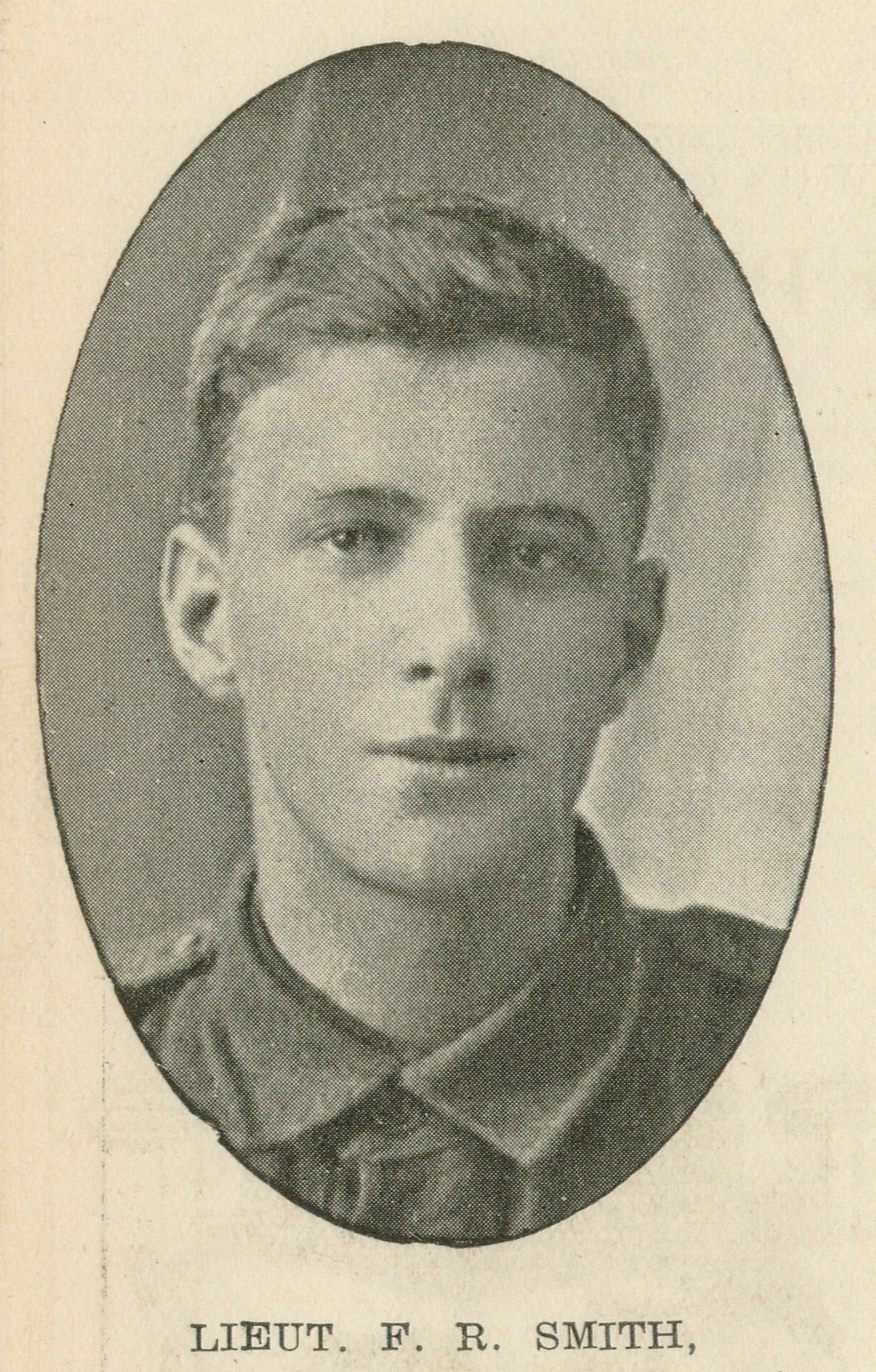
Lieut. F.R. Smith, one of the soldiers photographed in The Queenslander Pictorial, supplement to The Queenslander, 1916, John Oxley Library, State Library of Queensland.
Francis Ryan Smith was born in Toowoomba on 23rd July 1896 to William Henry and Bridget Teresa (nee Ryan) Smith. He was one of 6 sons born to the couple. His parents ran the Union Hotel and and later the Crown Hotel in Toowoomba until Bridget sadly passed away in 1908. As a child Francis was involved in Toowoomba Eisteddfods and was known for his fine singing voice, a gift said to have been inherited from his mother. He was educated at the Christain Brother’s School in Toowoomba and later Nudgee College in Brisbane. He left school in 1912 and was employed as a bank clerk at the Royal Bank of Queensland.
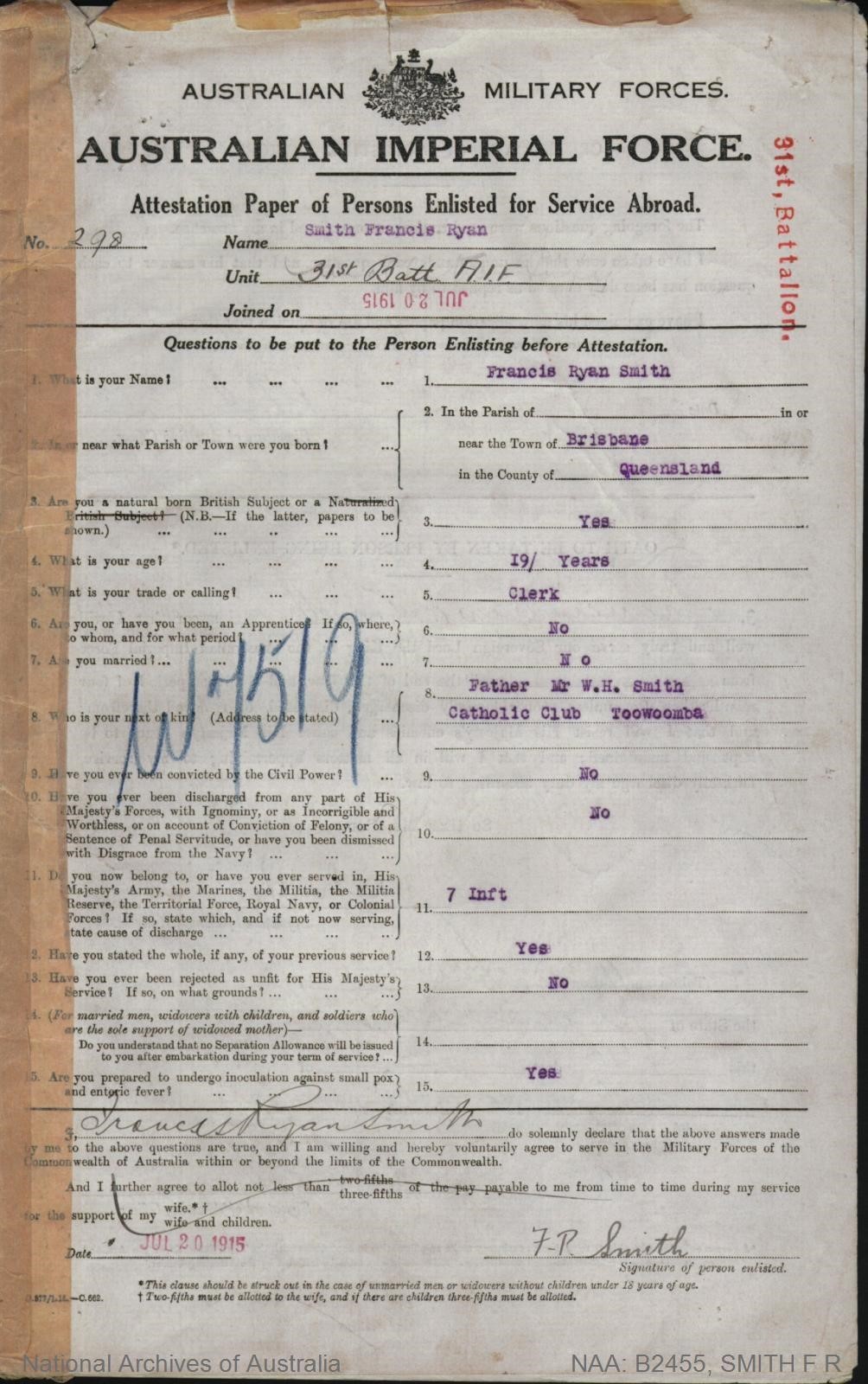
B2455, Francis Ryan Smith Service Records, Courtesy National Archives of Australia.
On 20 July 1915 Francis enlisted in the AIF in Brisbane after receiving permission from his father. The 19-year-old was assigned to A Company in the newly formed 31st Infantry Battalion at Enoggera Camp, Brisbane. While participating in basic training Francis passed his Sergeant’s promotion examination held at the Rifle Range Camp in mid-September 1915. He embarked overseas on the H.M.T (A62) ‘Wandilla’ on 9 November 1915, bound for the Middle East and then eventually the Western Front.
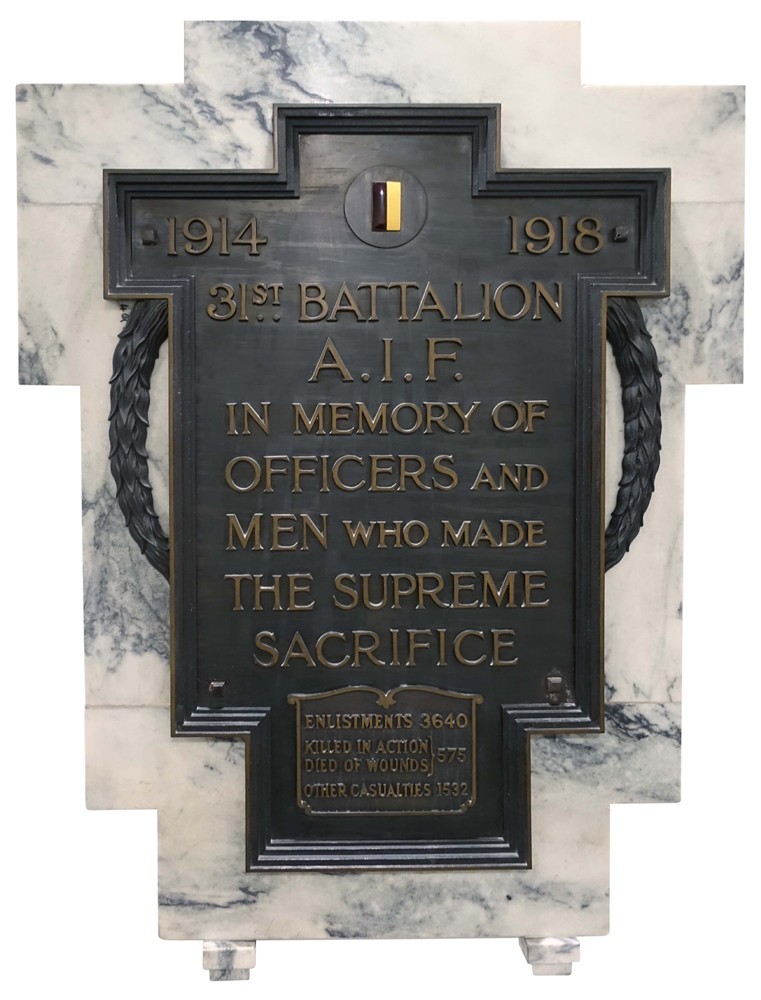
31st Infantry Battalion Memorial Plaque, Anzac Square, WWI Crypt
Francis, as an infantry officer, served with distinction in the 31st battalion, seeing action at Fromelles and later around Armentieres in 1916. The 19-year-old climbed through the ranks, eventually being promote to 2nd Lieutenant on 29 July 1916. On 12 October 1916 he was wounded at Armentieres, sustaining a severe gunshot wound to his left foot. The injury required treatment in England, and he was transferred to various hospitals then to Perham Downs for convalescence. He gained recognition for his action in the field at Armentieres - leading a raiding party into enemy trenches, and in April 1917 was awarded a Military Cross for;
For conspicuous gallantry in action. He led a raiding party into the enemy trenches with great courage and initiative. He set a splendid example to his men.
Recovered and ready to rejoin his unit, Francis proceeded back to France in mid-December 1916, and was promoted to full Lieutenant on 17 January 1917, however in August 1917 he requested a transfer to the Australian Flying Corps and proceeded back to England for flight training. He graduated in December 1917 was appointed a Flying Officer (Pilot), and headed back to France assigned to the 2nd Squadron, Australian Flying Corps. Between May and October 1918 he achieved a string of aerial victories, downing 16 enemy aircraft with a daring and skill that earned him the Distinguished Flying Cross, 1918, having eighteen official German 'planes to his credit, the second greatest number gained by any member of the Australian Flying Corps.
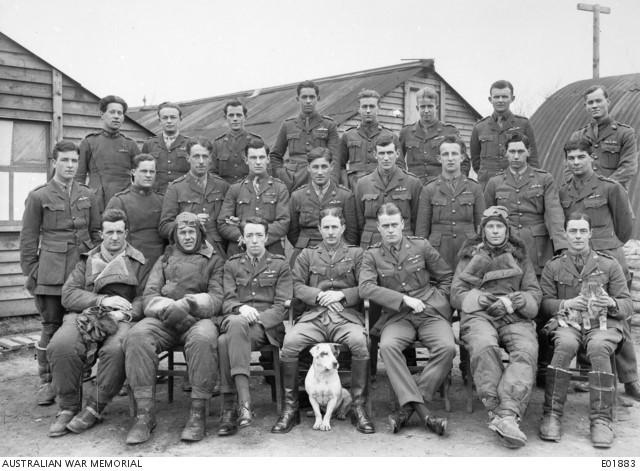
Group portrait of officers of No 2 Squadron, Australian Flying Corps, E01883, Australian War Memorial.
A Flight Leader by mid-September 1918, he was promoted Captain and Flight Commander in October 1918, and became his squadron's leading ace. In addition to his remarkable record, he became the squadron's final casualty. Shot down on 10 November 1918 behind enemy lines, he donned civilian clothing to evade capture, and walked 40 miles back to his squadron mess, where he found his comrades celebrating the announcement of the Armistice.
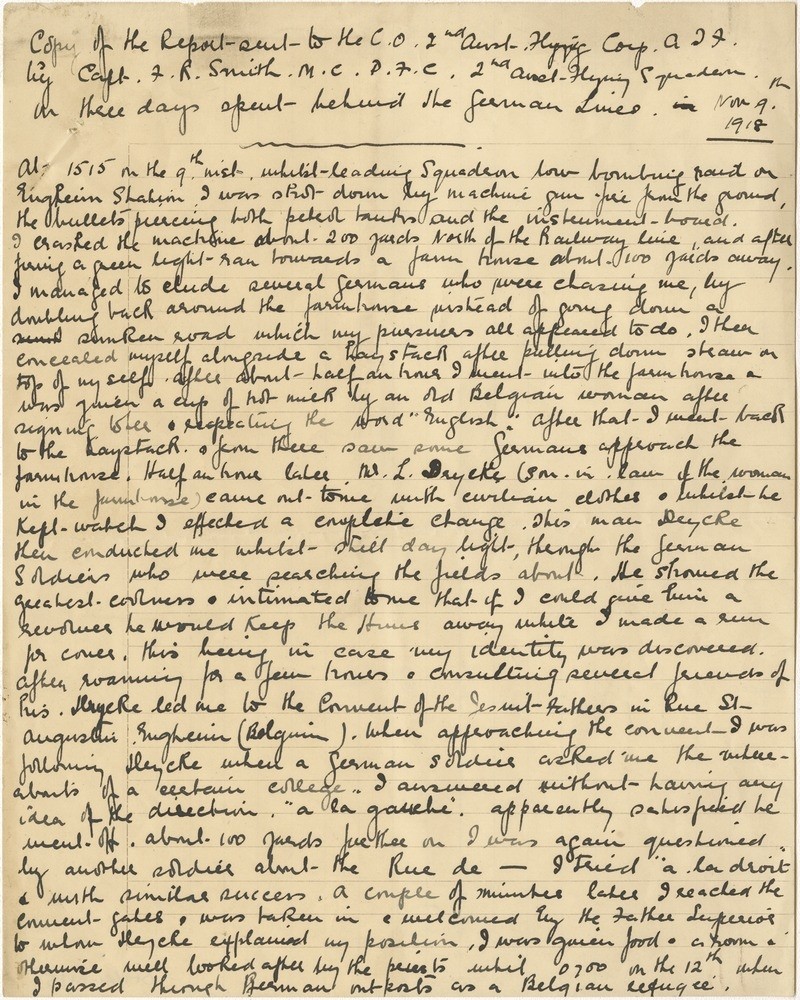
OM64-31/5 Francis Ryan Smith Report 13 Nov 1918, John Oxley Library, State Library of Queensland, p. 1.
Francis was discharged from the AIF in Brisbane on 13 August 1919. While settling back into civilian took the opportunity to study engineering at St. Leo’s College in Brisbane. Following the war Francis was also involved in the Peace Loans scheme, which attempted to reduce the cost of the war by encouraging Australians to loan money to the government for interest. The scheme was promoted by using aero planes manned by WWI pilots, who visited various locations and performed aerial acrobatics.
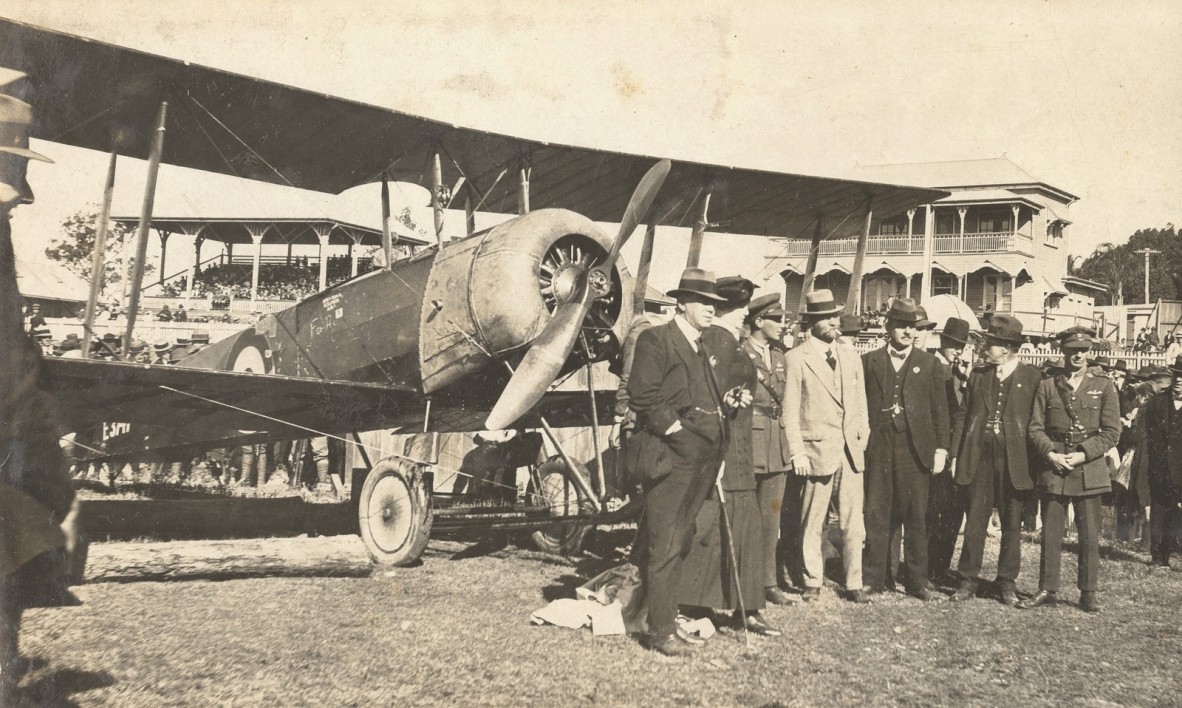
Flight Commander Francis Smith and the Peace Loan Committee with the Peace Loan biplane at Kedron Racecourse, 1919, John Oxley Library, State Library of Queensland, Image number: 27189-0001-0011.
On 6 September 1919 there was an exhibition of the Peace Loans airplane at the Kedron Park racecourse, where Francis wowed spectators with daring aerial acrobatics. The days prior he had conducted several flights putting his plane through the loops and dropping pamphlets promoting the Peace Loans across Brisbane. The Kedron Park event was a huge success, with the peace Loan Committee rapidly advancing towards its quota for the Queensland subscription. In the following days he performed at New Farm, Toowoomba and Laidley. On 17 September Francis took off on a northern series of flights and flew to Nambour, where he spent an hour before flying on to Gympie. After lunch at Gympie, the aeroplane was to continue on to Maryborough but crashed into a stringbark tree on takeoff. A crowd quickly gathered at the site and were so relieved that the occupants were uninjured they gave a hearty cheer. This accident ended Francis’ flying for the 1st Peace Loan Appeal, which was highly successful, being oversubscribed, and setting the base for a 2nd appeal in 1920.
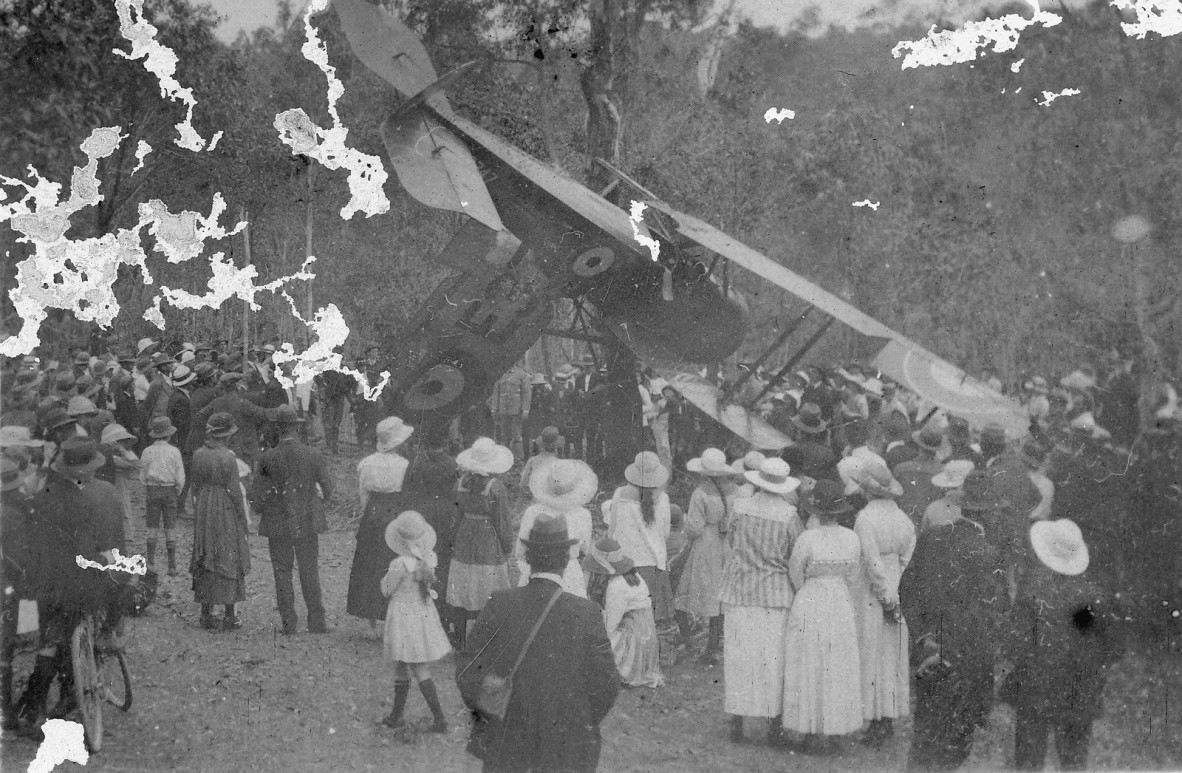
Wreckage of a peace loan aeroplane that crashed in Gympie, 1919, John Oxley Library, State Library of Queensland, Negative number: 189582.
In January 1920 Francis accepted a job in China with Boyd and Co., General Merchants, as an office assistant. With his natural charisma and personality Francis excelled in this position and by 1925 he was the managing director and principal shareholder of the company. While working in China Francis kept in contact with his cousin Annie, whom he married in 1926. The couple had two daughters together, Shirley and Barbara. In 1935 he started an aviation company in Hong Kong reflecting his ongoing love of flying.
Francis and his family returned to Australia in 1940, as tensions in the Pacific intensified. During the Second World War, Francis served in the Royal Australian Air Force, and was assigned to assist with the Air Training Corps (ATC). Formed in 1941 the ATC sought to attract air minded youth into the rapidly expanding RAAF. The program provided training to 16–18-year-olds, in mathematics, theory of flight, radio work, navigation and drills. By the end of the war more than 13,000 Australian youth had participated in the program. He achieved the rank of squadron leader before he was discharged in January 1944. His final posting on discharge was No. 3 Wing, Air Training Corps. Following the war Francis continued his business dealings, one of which was purchasing, leasing and then selling property in Ryde. He died on 24 December 1961 in Balmain, NSW.
Francis Ryan Smith’s personal story is part of our 2023 Remembrance Day Campaign. Each year, on 11 November, Australians observe one minute's silence at 11am, in memory of those who have died or suffered in all wars and armed conflicts. This year who will you stop to remember? Share your stories in the comments.
Additional Resources:
Comments
Your email address will not be published.
We welcome relevant, respectful comments.